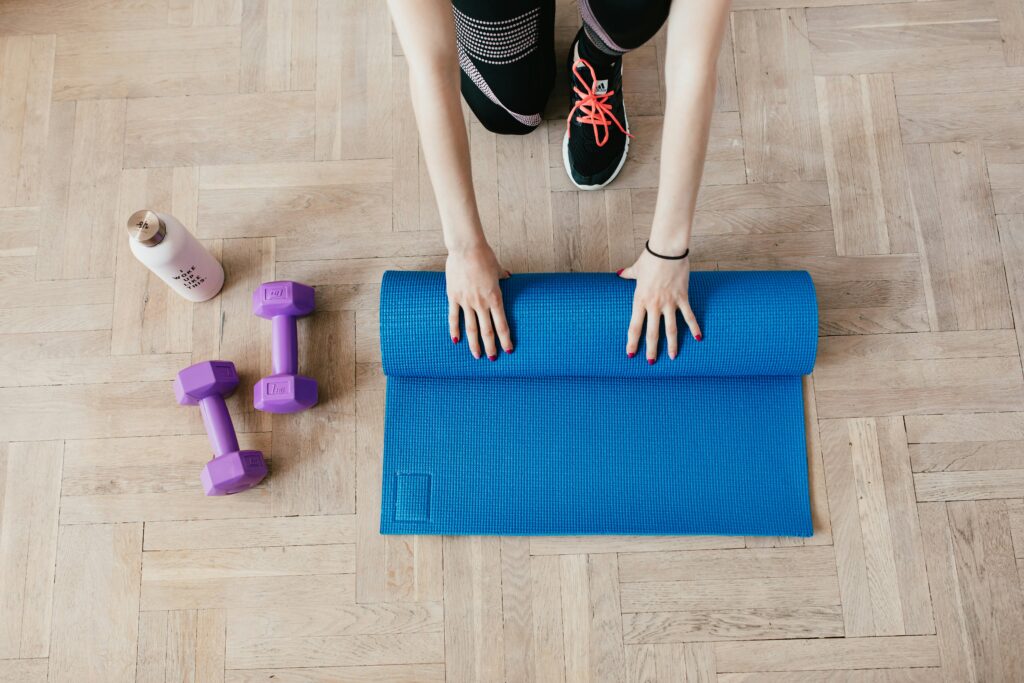The Ultimate Guide to Building a Balanced Fitness Routine
Discover the ultimate guide to building a balanced fitness routine. Learn strategies for a well-rounded and sustainable workout plan.

Building a balanced fitness routine is essential for achieving long-term health and fitness goals. A well-rounded workout plan that includes strength training, cardiovascular exercise, flexibility work, and adequate rest ensures that all aspects of fitness are addressed. In this ultimate guide to building a balanced fitness routine, we’ll explore effective strategies to create and maintain a comprehensive fitness plan.
1. Importance of a Balanced Fitness Routine
A balanced fitness routine ensures that all areas of fitness are addressed, promoting overall health, reducing the risk of injury, and enhancing performance. This ultimate guide to building a balanced fitness routine will help you understand the significance of incorporating various fitness components into your workout plan.
2. Components of a Balanced Fitness Routine
The key components of a balanced fitness routine include:
- Strength Training: Builds muscle and improves metabolism.
- Cardiovascular Exercise: Enhances heart health and increases stamina.
- Flexibility Exercises: Prevents muscle stiffness and improves range of motion.
- Rest: Allows for muscle recovery and prevents overtraining.
3. Strength Training
Strength training should be included 2-3 times per week, targeting different muscle groups each session. Here’s how to incorporate strength training effectively:
- Variety of Exercises: Include exercises like squats, deadlifts, bench presses, and rows.
- Progressive Overload: Gradually increase the weight or resistance to challenge your muscles.
- Proper Form: Focus on performing exercises with proper form to prevent injuries.
4. Cardiovascular Exercise
Cardiovascular exercises are essential for improving heart health and burning calories. Effective cardio exercises include:
- Running: Great for building endurance and burning calories.
- Cycling: Low-impact option that strengthens the lower body.
- Swimming: Full-body workout that’s easy on the joints.
- HIIT: High-Intensity Interval Training alternates between intense bursts of activity and periods of rest, boosting cardiovascular fitness and burning fat.
5. Flexibility Exercises
Flexibility exercises help prevent muscle stiffness and improve overall flexibility. Here’s how to include them in your routine:
- Stretching: Perform static stretches after workouts, holding each stretch for 20-30 seconds.
- Yoga: Incorporate yoga sessions to enhance flexibility, balance, and mental relaxation.
- Pilates: Focuses on core strength and flexibility through controlled movements.
6. Importance of Rest
Rest is crucial for muscle recovery, preventing overtraining, and reducing the risk of injury. Ensure you include rest days in your fitness routine:
- Rest Days: Have at least one to two rest days per week to allow your muscles to recover.
- Listen to Your Body: Pay attention to signs of fatigue and adjust your rest days accordingly.
- Active Recovery: Engage in light activities like walking or stretching on rest days to promote blood flow without straining your muscles.
Building a balanced fitness routine is key to achieving long-term fitness success. By incorporating strength training, cardiovascular exercise, flexibility work, and adequate rest, you can create a comprehensive workout plan that addresses all aspects of fitness. Remember, consistency and balance are essential for maintaining a healthy and effective fitness routine.
For further reading, don’t miss our article “Recovery and Rest: Key to Long-Term Fitness Success” for practical tips on incorporating recovery into your fitness plan to enhance overall performance. Additionally, consider “The New Rules of Lifting for Life: An All-New Muscle-Building, Fat-Blasting Plan for Men and Women Who Want to Achieve Their Best Bodies Ever” by Lou Schuler and Alwyn Cosgrove. This book provides comprehensive insights and practical advice for creating a balanced fitness routine. This ultimate guide to building a balanced fitness routine will be a valuable resource on your journey to fitness success.
QAR:
Q: Why is a balanced fitness routine important? A: A balanced fitness routine ensures that all areas of fitness are addressed, including strength, cardio, flexibility, and rest. It promotes overall health, reduces the risk of injury, and enhances performance.
Q: What are the components of a balanced fitness routine? A: The key components include strength training, cardiovascular exercise, flexibility exercises, and adequate rest. Incorporating all these elements ensures a comprehensive and effective workout plan.
Q: How often should I include strength training in my routine? A: Strength training should be included 2-3 times per week, targeting different muscle groups each session. This helps build muscle, improve metabolism, and support overall fitness.
Q: What are some effective cardiovascular exercises? A: Effective cardiovascular exercises include running, cycling, swimming, and high-intensity interval training (HIIT). These activities improve heart health, increase stamina, and burn calories.
Q: How can I improve flexibility in my fitness routine? A: To improve flexibility, incorporate stretching exercises and practices like yoga or Pilates into your routine. Stretching after workouts helps prevent muscle stiffness and enhances overall flexibility.
Q: Why is rest important in a fitness routine? A: Rest is crucial for muscle recovery, preventing overtraining, and reducing the risk of injury. Ensure you have at least one to two rest days per week and listen to your body’s needs.




